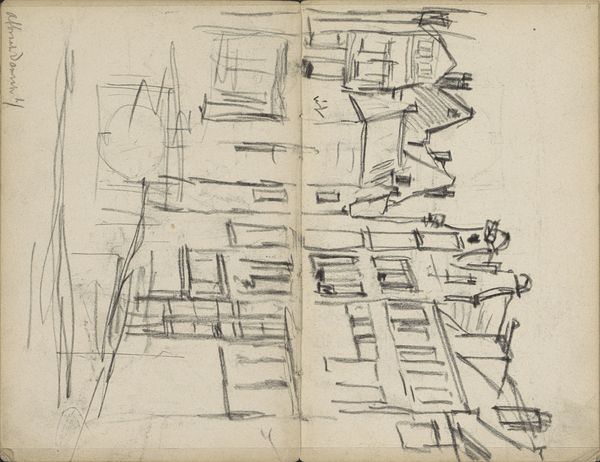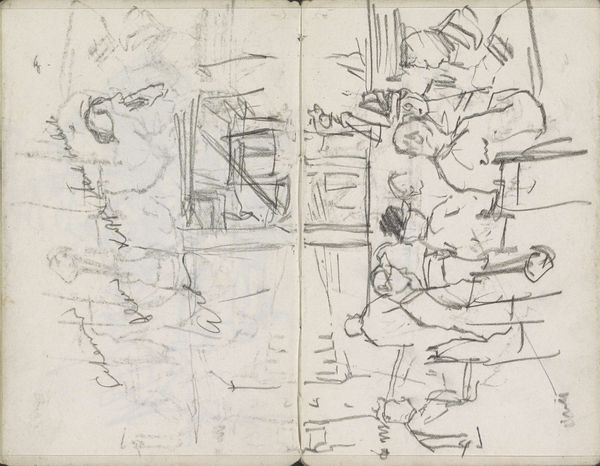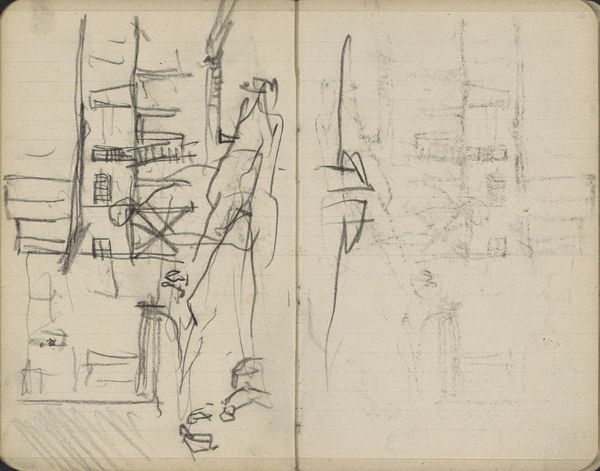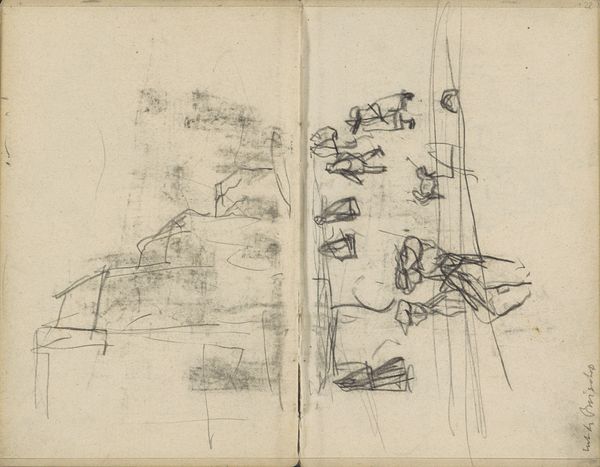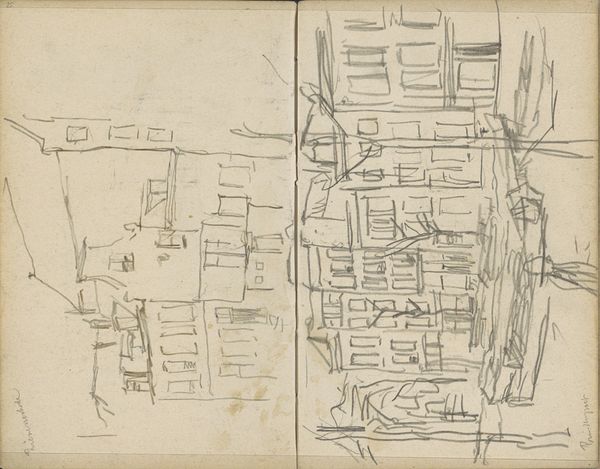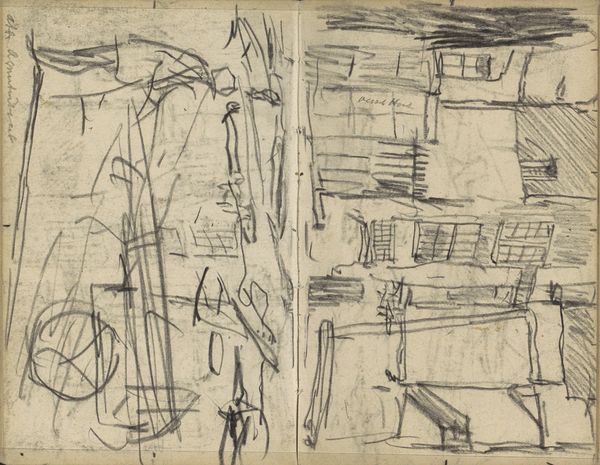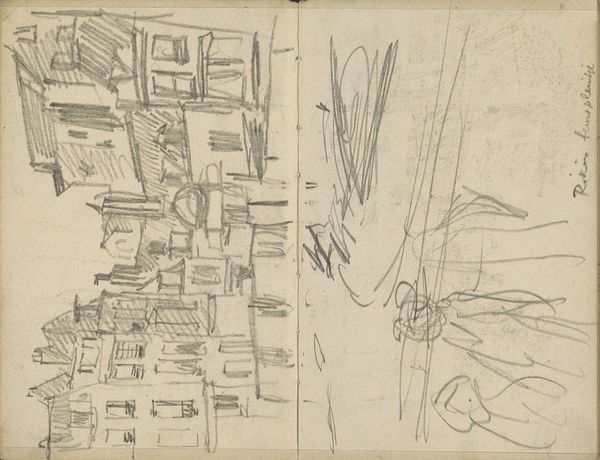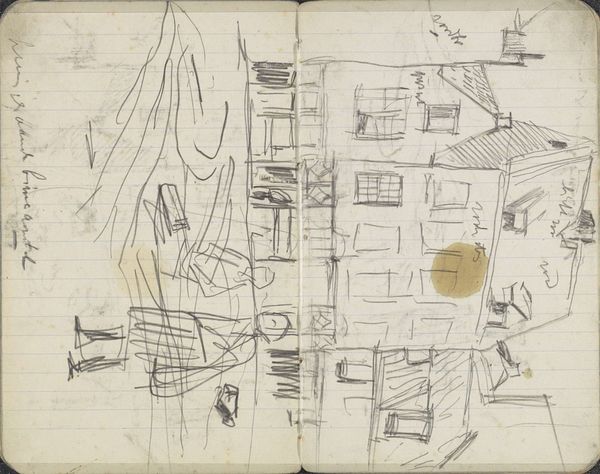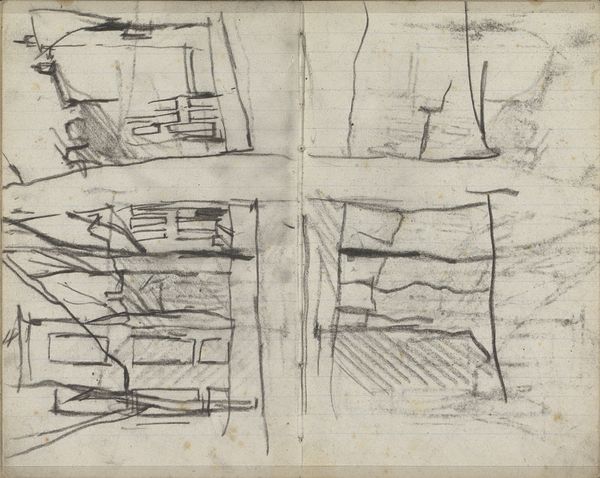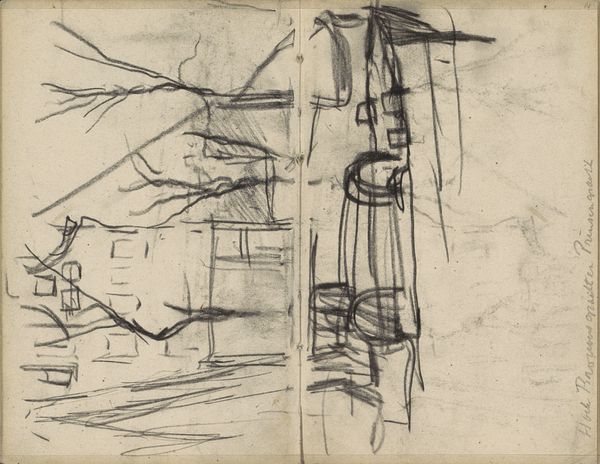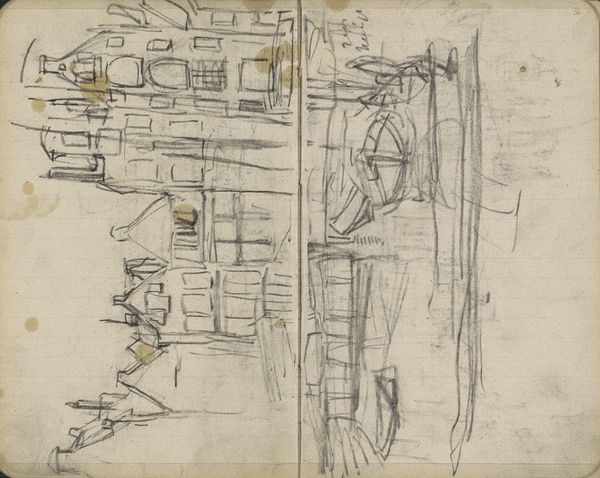
Copyright: Rijks Museum: Open Domain
Curator: This drawing, circa 1902, by George Hendrik Breitner captures "A View of the Damrak in Amsterdam." It's rendered in ink on paper and currently resides in the Rijksmuseum. Editor: My initial impression is… tentative. Like a half-remembered dream. The composition is divided in a really unsettling way—one side dissolving into gestural marks, the other somewhat more defined with recognizable architectural shapes. Curator: Interesting observation about division! Breitner seems to explore the intersection between rapid, almost impulsive notation, and the skeletal structure of the urban environment. This evokes a sense of the modern city being perpetually under construction, an unstable and ever-shifting space. Editor: Exactly. There's a distinct lack of embellishment or even tonal variation. We see an interest in pure form: a play of positive and negative space that gives us just enough to decipher the architectural details, but withholding enough that it feels incomplete. Is this Breitner thinking about how quick modern life transforms one’s experiences into incomplete fragments? Curator: You've raised some valid points. It would be relevant to remember that the Damrak was – and still is – the city’s arrival point. Breitner’s composition seems less about capturing a physical likeness of Amsterdam, and more about reflecting on the ephemeral feeling of arrival. Editor: Thinking historically, though, one wonders: Was the audience prepared for this kind of raw immediacy? Were critics receptive to a vision of Amsterdam that prioritized feeling over precise detail? The work surely asks us to reassess traditional depictions of civic pride. Curator: Undoubtedly. And his style is clearly an embrace of Impressionism – think Manet's sketches, for example, focusing less on precision and more on capturing a fleeting moment, a sensory experience. Breitner doesn't just show us the city; he attempts to make us feel it, however fleetingly. Editor: So, we find a negotiation between formal experimentation, reflecting Breitner’s place within the art historical narrative, and his capturing something specific and unique to Amsterdam’s changing place in the world? Curator: Precisely. It's not merely a city captured, but the very pulse of urban life sketched onto paper. Editor: Thanks. It leaves us questioning the very nature of our interaction with cities, and the process of recording fleeting moments.
Comments
No comments
Be the first to comment and join the conversation on the ultimate creative platform.
